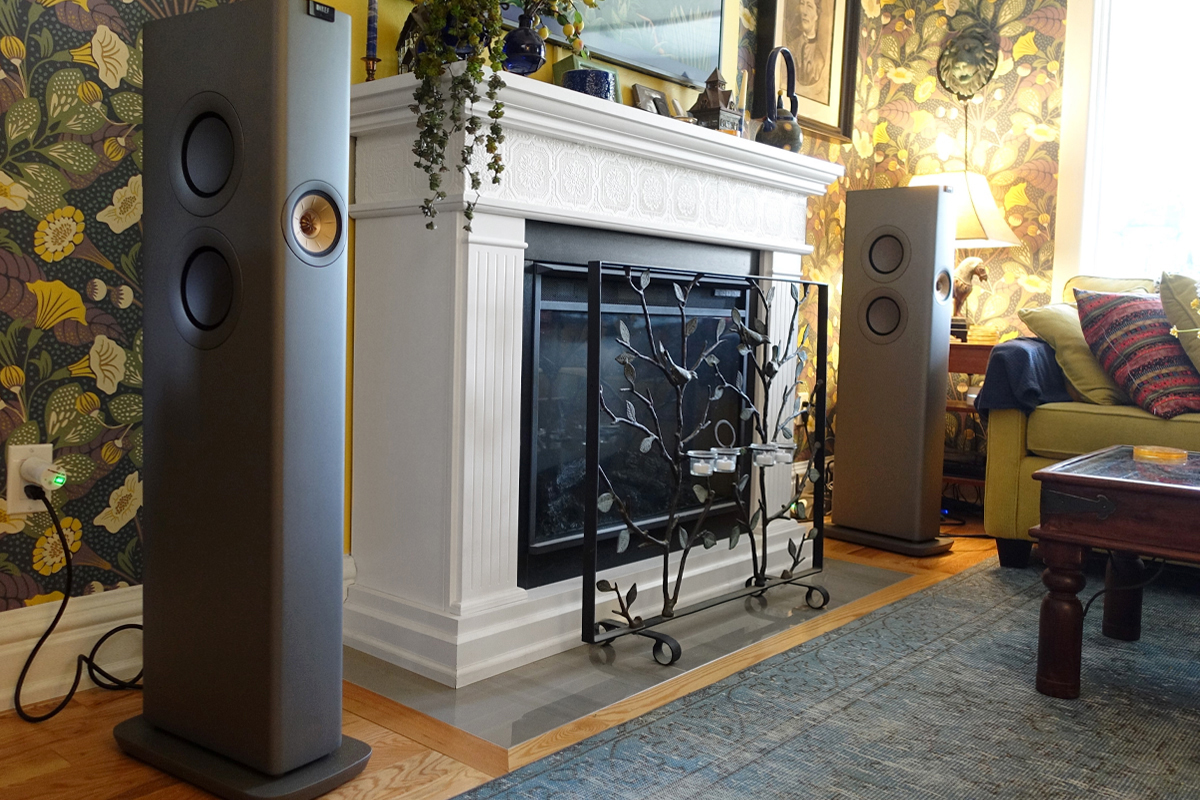It’s been said so often, it’s almost an audiophile cliché: the most important component in any sound system is the room in which it’s used. Like all clichés, this one contains a large measure of truth.
Take my listening room, for example. As I’ve written many times on this site, there’s no space for a dedicated listening room in our small urban rowhouse, so our hi-fi system is set up in the living room. Fortunately, the room’s layout allows for optimal placement of the speakers for stereo listening. The two speakers, placed on either side of an electric fireplace near an exterior wall, form a perfect equilateral triangle with the main listening position on the end cushion of our sectional sofa against the opposite interior wall.
But there are problems. The distance between those two walls is exactly 9′, which is the same as the height of the room. That corresponds to a half-wavelength of a 62.5Hz sound—so, not surprisingly, there is a huge peak at that frequency at the main listening position, especially in the right channel (the left speaker is opposite a small open doorway). And there’s a huge dip at 125Hz, the corresponding full wavelength of a 9′ span. The right speaker is placed near a corner with another outside wall. The distance from that wall to the far wall of the adjoining dining room is about 21′, which is a half-wavelength of a 27Hz sound, so (no surprise) there’s another peak in the right channel at that frequency.
There are also issues in left-channel output, which I won’t go into here. Suffice it to say that with many recordings, the peaks and dips in both channels result in boomy, inarticulate, one-note bass.
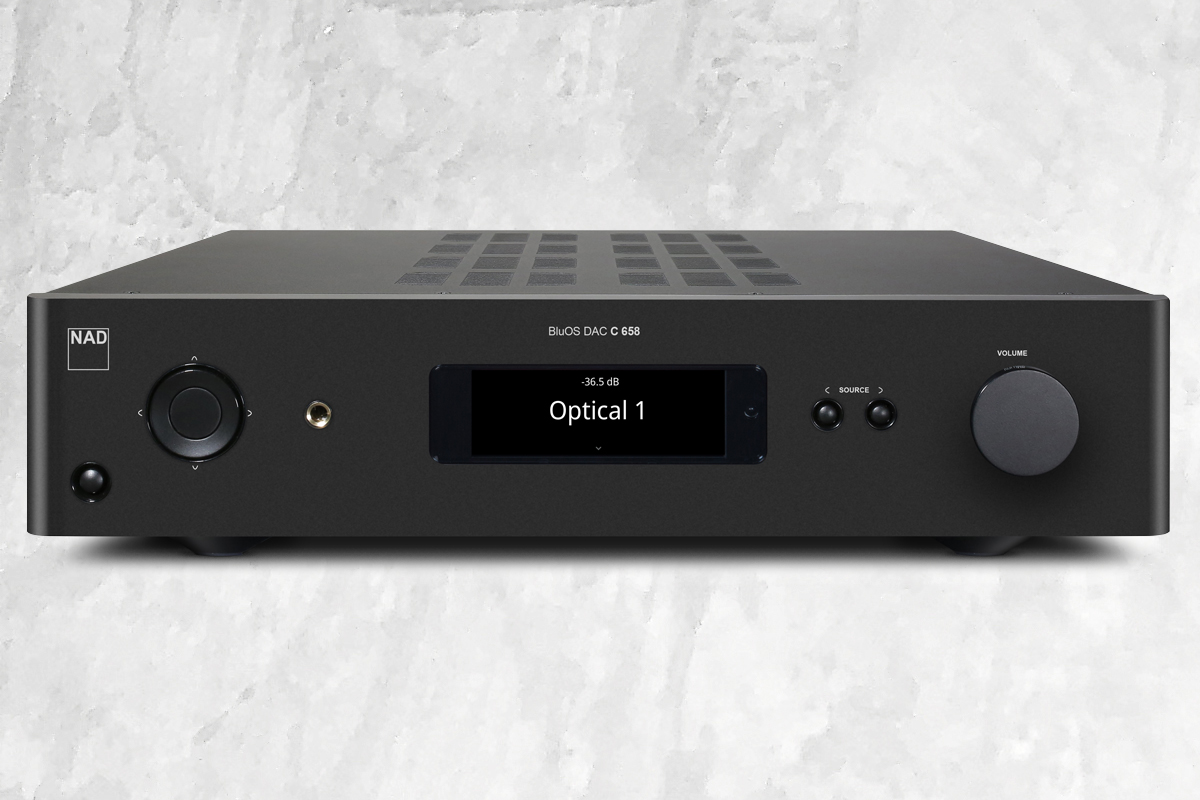
Sometimes you don’t realize how severe a problem is until you’re rid of it. That happened to me when I purchased an NAD C 658 streaming preamplifier in late 2019, motivated largely by the fact that it supports Dirac Live Room Correction. The C 658 comes with a license for the limited-bandwidth version of Dirac Live, which operates only on frequencies below 500Hz. Upgrading to the full-bandwidth version costs $99 (all prices in USD).
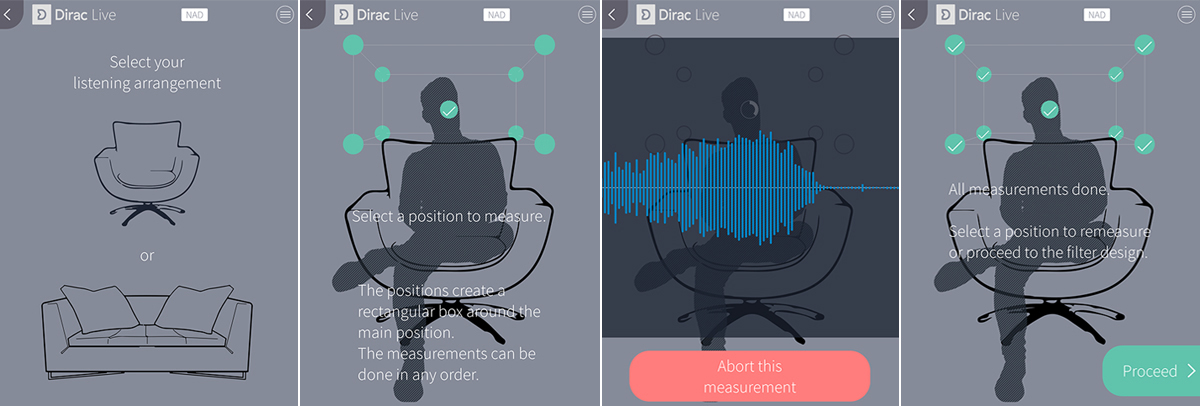
To use Dirac with the C 658, you take a series of measurements at different locations using the Dirac app and a supplied USB microphone, while a sine-wave sweep plays through one speaker and then the other. The measurements are transmitted over the internet to Dirac’s servers, which analyze the results and calculate correction filters. These are sent back to the device running the Dirac app and then uploaded to the playback component.
These filters operate in both the frequency and time domains. So not only do they smoothen amplitude (magnitude) response at the listening position, they also optimize impulse response. As I stated in my review of the C 658, using Dirac in my room made a huge improvement in bass definition, soundstaging, and imaging.
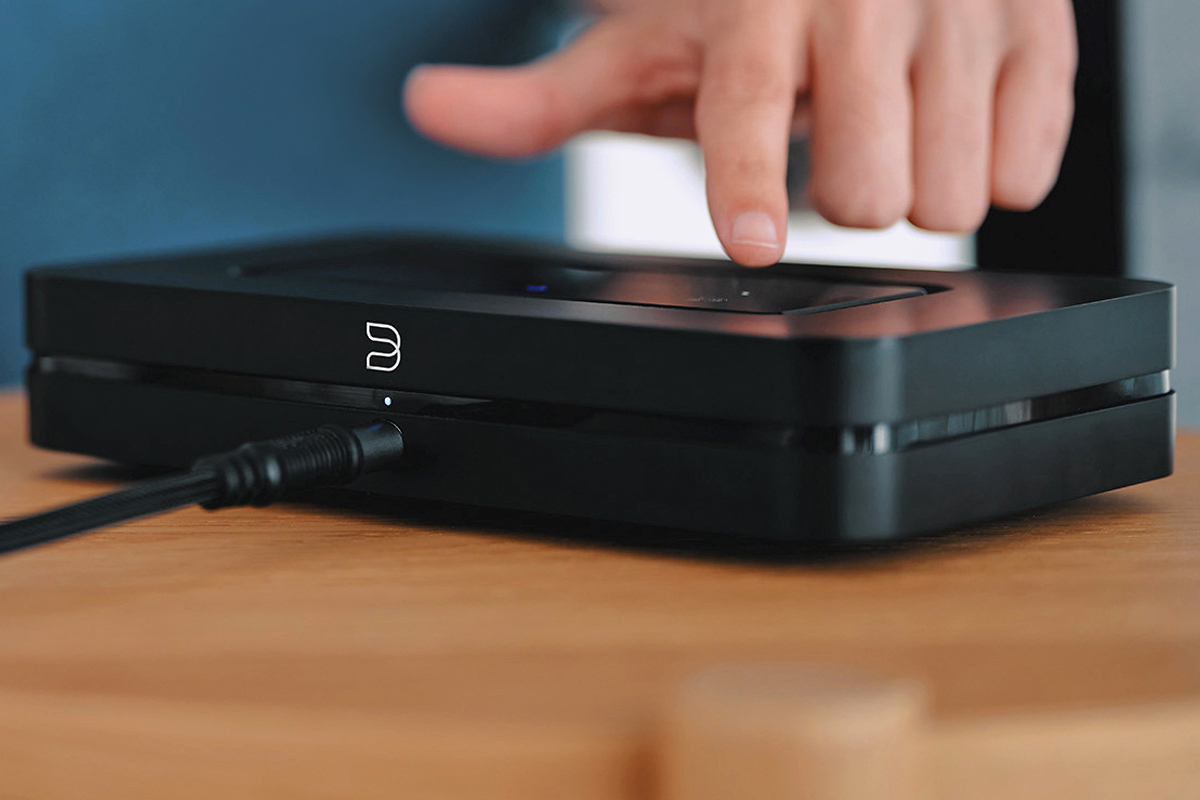
I sold the C 658 after I purchased a KEF LS60 Wireless active speaker system in 2022. To deal with the troublesome acoustics of my listening room, I implemented some parametric-EQ filters using the DSP tools in Roon, the application that I use for most of my listening. These EQ filters were certainly helpful, but not as effective as Dirac had been. So earlier this year, I purchased a new Bluesound Node streaming preamp, which supports Dirac Live Room Correction, and obtained a license for the full-bandwidth version of Dirac ($249). Compared to the EQ filters I’d enabled in Roon, Dirac delivered better bass definition, more immersive soundstaging, and more precise imaging.

Such results left me wanting to know more about Dirac Research AB and its products. In addition to Dirac Live Room Correction, the Swedish company’s offerings include Dirac Live Bass Control, Dirac Active Room Treatment, and Dirac Room Correction Suite. So in late February, I reached out to Dirac to see if I could arrange an interview with one of the company’s senior engineers. Dirac graciously offered me an interview with company cofounder Nilo Casimiro Ericsson, who currently serves as Dirac’s product owner for the home and pro markets. Ericsson holds a master of science in engineering physics and a PhD in signal processing from Uppsala University, and is a certified software product manager.
Our Google Meet video interview took place on April 8. I began our discussion by asking Ericsson about that famous audiophile cliché. The following interview has been lightly edited for brevity and clarity.
Gordon Brockhouse: The listening room is often referred to as the most important component in a sound system. Is that true? Is there such a thing as an ideal listening room? If so, what are its characteristics?
Nilo Casimiro Ericsson: There are standardized rooms. The ITU [International Telecommunications Union] has a standard room for listening to reproduced content. That reference room is not necessarily a good room acoustically. It’s more like a definition for speaker position and where the listener is supposed to be sitting in relation to the speakers.
There are many opinions about what makes for a good listening room. Some people even say that the worst thing you can do to a set of speakers is to put them in a room, because of the impact of the room’s acoustics. But the room is indeed an important part of the sound system. We have to deal with the acoustic consequences of reverberation and reflections.
GB: Even before applying electronic room correction, are there things that you suggest doing to the room? Can some problems be solved fully or mostly by treatments like bass traps and diffusers?
NCE: There’s always something you can do to mitigate the worst effects of the room. For example, you want some kind of damping materials so the room is not too vivid and reverberant. Having a furnished room with carpets and curtains is a good first step.
Bass traps are useful when you have a very square room where some bass frequencies are problematic. But bass traps only go so far down in frequency. Their value is in their size. If you want to go deep in frequency, you’re going to need a very big bass trap. The most merit is in diffusing elements in the room to avoid direct reflections from side walls and the wall behind the speakers.
GB: Are there rooms that are so problematic that doing any kind of digital correction is pointless? Maybe highly reverberant rooms with plaster or concrete construction? Are there rooms where you just throw up your hands?
NCE: I don’t think so. I’ve heard from partners who work with challenging environments, like a carved-out room in a mountain or a totally concrete basement, where they find that digital correction works wonders.
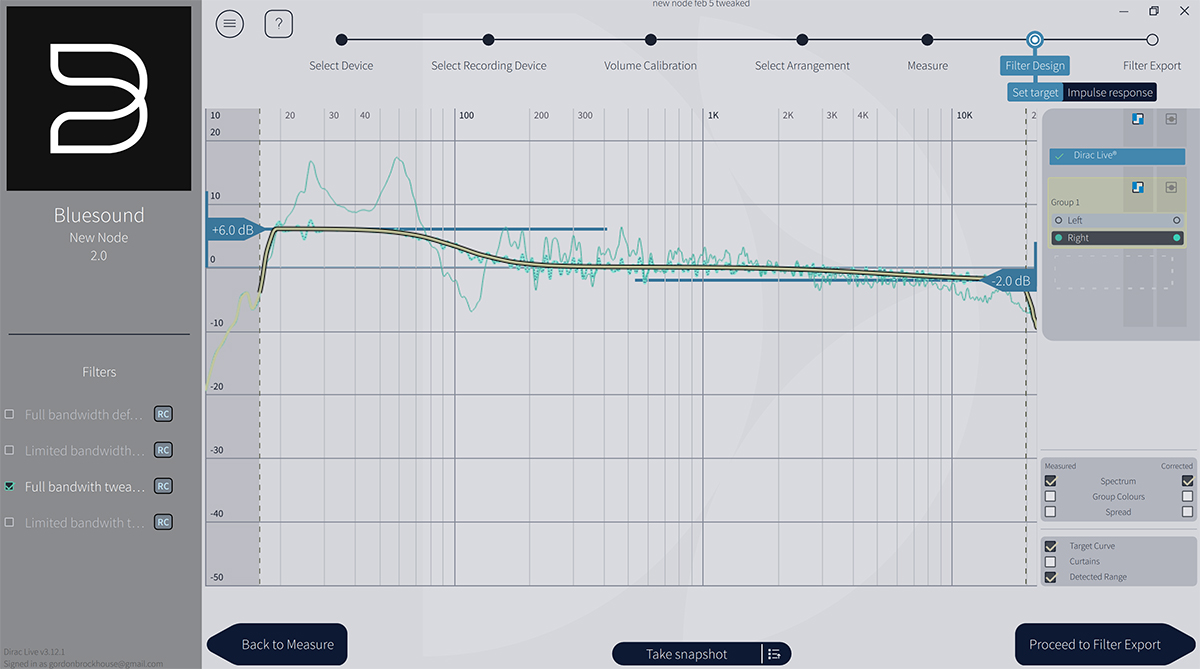 This chart shows uncorrected (faint green trace) and corrected (bold green trace) amplitude response for the right channel, with corrections performed by Dirac Live on a Bluesound Node streaming preamp, which is part of the author’s music system.
This chart shows uncorrected (faint green trace) and corrected (bold green trace) amplitude response for the right channel, with corrections performed by Dirac Live on a Bluesound Node streaming preamp, which is part of the author’s music system.
GB: I think our readers can wrap their heads around what their Dirac is doing in the frequency domain to address standing waves. But can you explain what it’s doing with impulse-response correction—how that works and what the benefits are?
NCE: Phase correction is part of the impulse-response correction. Phase correction is restoring the timing of the different frequencies in the reproduced sound. That makes the sound more natural and lifelike. It’s like washing away what is added by the speaker and speaker location in the room. You get the stereo imaging back because you get better phase coherence between left and right speakers so that the phantom image comes back. You can compare it to magnitude-response correction that you get with standard EQ, but instead of adjusting levels of different frequencies, we’re adjusting the timing of those frequencies.
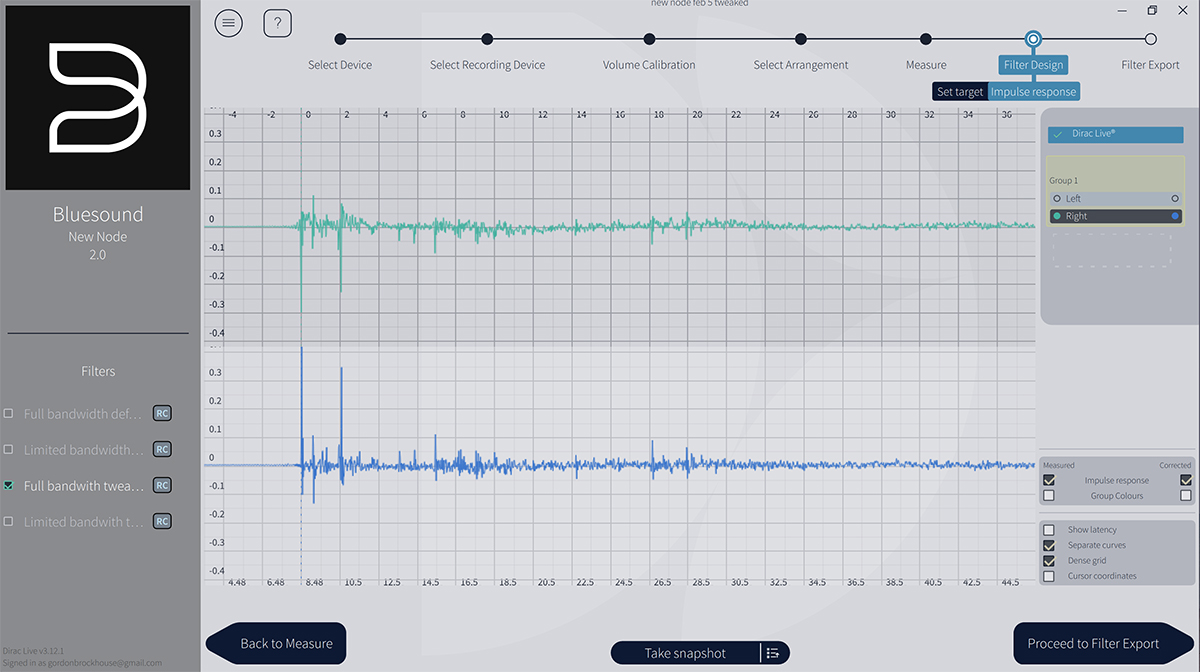 This chart shows uncorrected (green trace, above) and corrected (blue trace, below) impulse response, with corrections performed by Dirac Live on a Bluesound Node streaming preamp, which is part of the author’s music system.
This chart shows uncorrected (green trace, above) and corrected (blue trace, below) impulse response, with corrections performed by Dirac Live on a Bluesound Node streaming preamp, which is part of the author’s music system.
GB: It’s easy for me to understand how Dirac corrects peaks in response. But how do you correct for a null? If you boost output to compensate for a null, the out-of-phase reflection will also be higher in level. You’re kind of chasing the amplifier into clipping.
NCE: The signal processing that we do has some headroom to allow for applying a boost in some frequencies to compensate for nulls. But we only compensate for nulls that are robustly controllable, meaning that the null is present in all the microphone positions. So it’s obvious that it’s a property of either the speaker or speaker placement; it’s not a property of where we’re sitting in the room. We’re also applying a bit of smoothing in the frequency domain to avoid the deepest dips in response. It results in a more cautious compensation for that null.
That’s what we do with standard Dirac Live, where each speaker is compensating for its own in-room response. But we recently launched Dirac Active Room Treatment, which takes a different approach. We’re assuming that in the bass region, below 150Hz, the null is more a property of the room, that there is a cancellation at some frequencies because of the distance to the walls from the speakers and subwoofers. In those cases, usually one particular speaker cannot fill its own null. But with Active Room Treatment, we can let another speaker fill in the null for the original speaker.
GB: What platforms does Dirac Active Room Treatment run on?
NCE: At the moment, it’s only available on some StormAudio A/V processors. We’re working with other customers to make it more broadly available.
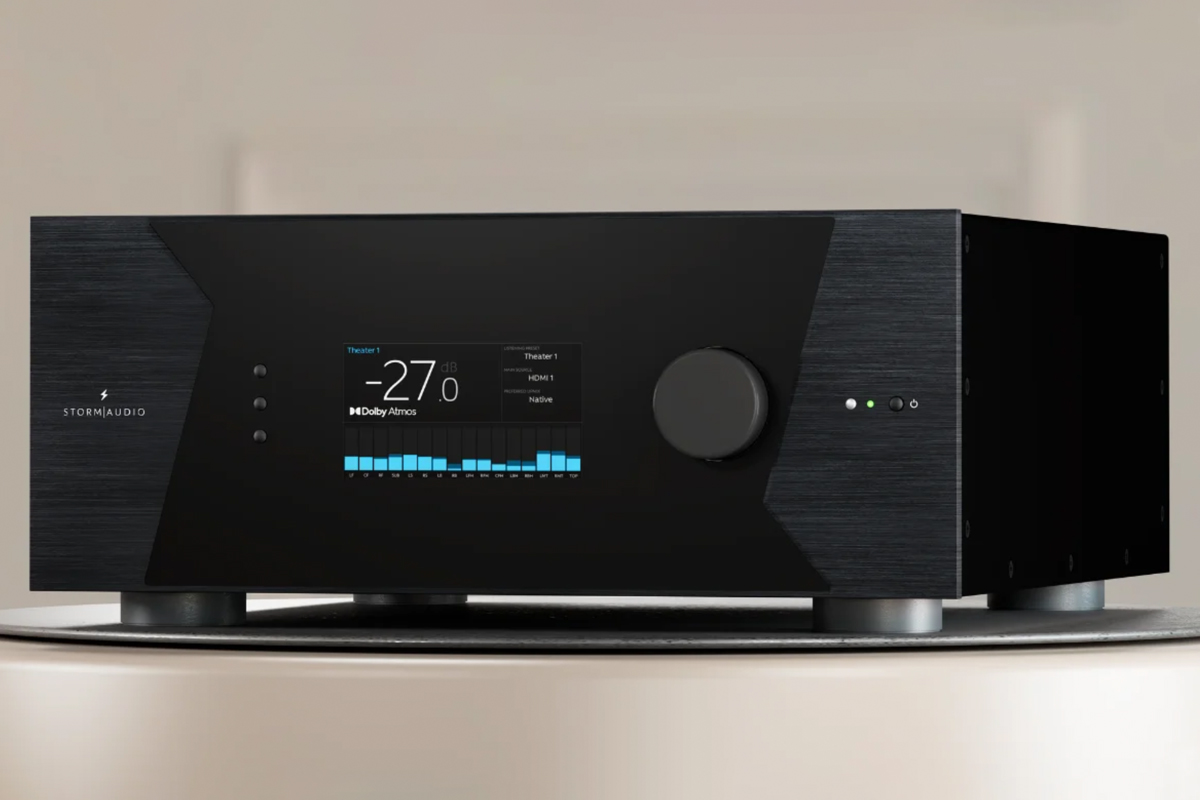
GB: Is Dirac Active Room Treatment confined to products like StormAudio because of the processing power required? Can it be implemented on more affordable, more attainable consumer products?
NCE: The processing cost is higher than standard Dirac Live because all the speakers contribute to correcting all the channels. So there is a lot of cross correction, and the complexity grows exponentially.
GB: Will Active Room Treatment work only with multichannel surround-sound systems, or is it usable in two-channel systems?
NCE: Good question. It’s usable in a two-channel system so the left speaker can support the right speaker in the bass area, below 150Hz, and vice versa.
GB: I think many of our readers are familiar with what Dirac Live Room Correction and Dirac Live Bass Control do in home environments. But Dirac is used in other environments like cinemas, recording studios, and automobiles. What have you learned from these environments that applies to what you do for home listening?
NCE: Great question. Actually, our first customer was a car manufacturer—BMW. We called it Dirac Live for Automotive back then. That flavor of Dirac Live is used to perform acoustical calibration of the car cabin sound system. Active Room Treatment was something that we introduced in automotive first, and then we adapted it to the home space.
Our second big customer group was commercial cinema installers. They were using a device from Datasat, which came out of DTS’s theatrical division. Datasat made a couple of processors with Dirac Live. They are being installed today in cinemas around the world. We got a lot of good feedback from professional cinema installers and learned a lot from them.
We also have a venture where we help manufacturers calibrate the sound of their headphones. It’s related to how you listen in a room when you have bass boost from the room gain and maybe some rolloff in the highest frequencies. And when you listen to speakers in a room, you also have the psychoacoustic effect of the head-related transfer functions that are not there when you listen to headphones. So we add a bit of those effects.
GB: How is this sold? Is it bundled with some headphones and devices? Is it available as an aftermarket product that anyone can purchase?
NCE: We’re not pushing it very hard. We were doing a lot of that five years ago, mainly with smartphone manufacturers in China, to help them get decent sound and a stereo image from their built-in microspeakers. In order to offer a full solution, we also covered the earphones they were bundling with their smartphones. It was part of the phone’s firmware. When wireless earbuds came to market, we started to integrate Dirac in the chipset of the earbuds.
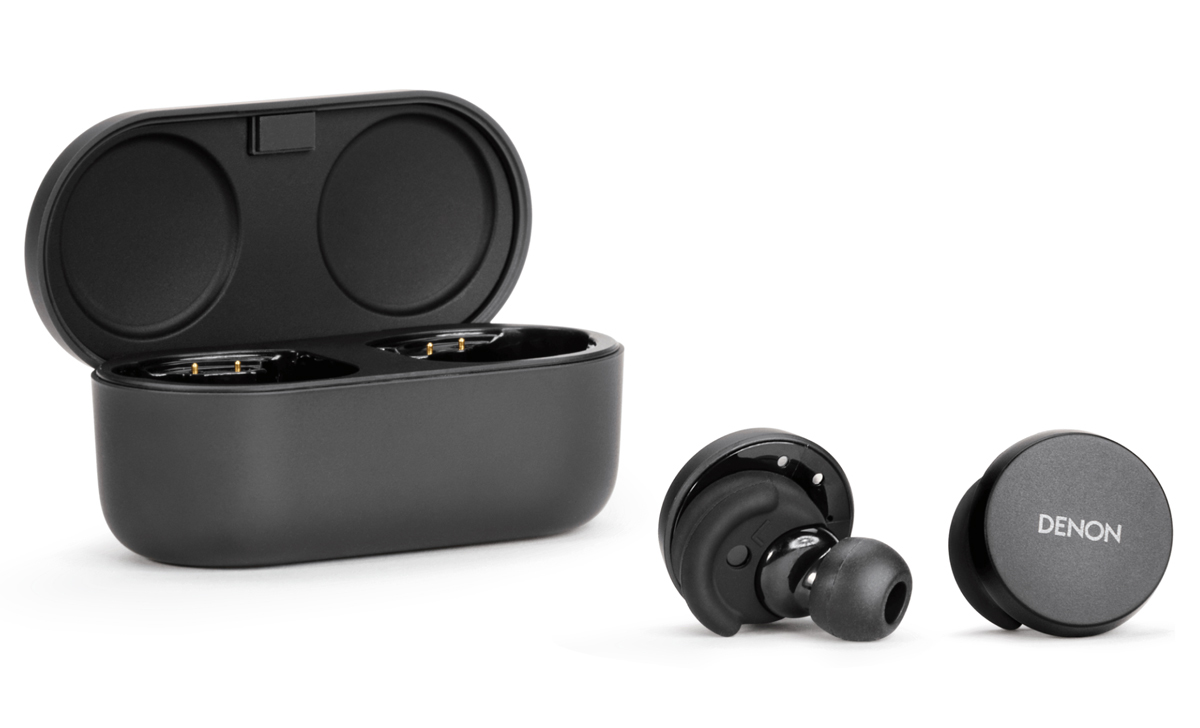
GB: Can you name any of your hardware partners in wireless earbuds?
NCE: Our technology is used in Denon PerL wireless earbuds.
GB: We’ve talked a little about what Dirac does in mobile and cinema. Is home playback the biggest market for Dirac, or is it one of these other applications?
NCE: Automotive is our biggest market. It accounts for 60 or 70% of our business. And the rest would be home entertainment.
GB: For home entertainment, is ease of use, especially for multichannel systems, a barrier for consumers? Do people find tasks like setting microphone levels confusing or onerous? Is there anything you can do to simplify this?
NCE: Ease of use is important to us, and it’s becoming more and more important as we try to reach more and more people. Initially, professionals were using our product, and then audiophiles who have audio as a hobby. These users are quite forgiving. We have a lot of focus on the useability of our software together with the equipment.
One of the strengths of our solution is that it’s relatively easy to use in comparison to what you can do with it. We always have to find a good balance between flexibility and customizability on the one hand, and ease of use on the other—not having to know a lot about acoustics or setting up speakers. Our application runs on the desktop—PC and Mac—but we also have mobile versions for iOS and Android.
GB: Let’s talk about the architecture of Dirac. My understanding is that the heavy lifting is done in the cloud. The device running the Dirac app uploads measurements from the calibration mike to Dirac’s servers, which then create the filters. The actual implementation of the filter is performed by the playback device. Am I correct in assuming that the playback part isn’t processor-intensive? The reason for that assumption is that Bluesound is going to enable Dirac Live on some legacy products that go back several years.
NCE: Yeah, the heavy lifting is actually in the calculation of the filters. Our cloud backend will calculate the filter coefficients and then the application will push the coefficients to the playback device. Inside the device is filter-processing software that knows how to use the coefficients and processes the sound in real time.

GB: Dirac has another product, Dirac Room Correction Suite, that runs on PCs and Macs. It’s aimed at the studio market, but does it have potential for home listeners? Could someone install the suite on a small desktop or laptop computer and connect it to a home-playback system, so they could get Dirac without an audio component that runs Dirac?
NCE: It’s possible. The processing would then run on a PC or a Mac instead of the audio component. But you would be limited to listening to audio that you can pass through the PC or Mac in order for the audio to be processed. So, for example, if you listen to Spotify or Tidal on a PC, then you can process it through Dirac.
GB: So any audio that the PC is playing—an application like Roon, Qobuz, Apple Music—could be processed by Dirac Room Correction Suite. Would it work with all outputs—USB, S/PDIF, network, analog?
NCE: Dirac processing would be agnostic to the physical output from the PC or Mac because we would be using a driver that someone else has made for that device. As long as that output shows up as an audio device on the PC or the Mac, the Dirac processor can connect to it and route the sound to that output.
GB: Could Dirac Room Correction Suite filters be exported to Roon and then implemented by Roon’s DSP tools?
NCE: I’m not familiar with Roon. The Room Correction Suite supports several plugin formats. Some music-player applications, Audirvāna, for example, have a plugin host so you can apply different effects. Room Correction Suite is also used in its plugin form in digital audio workstations. Professional sound producers are using it in their monitoring systems. We’ve learned quite a bit from these professional users.
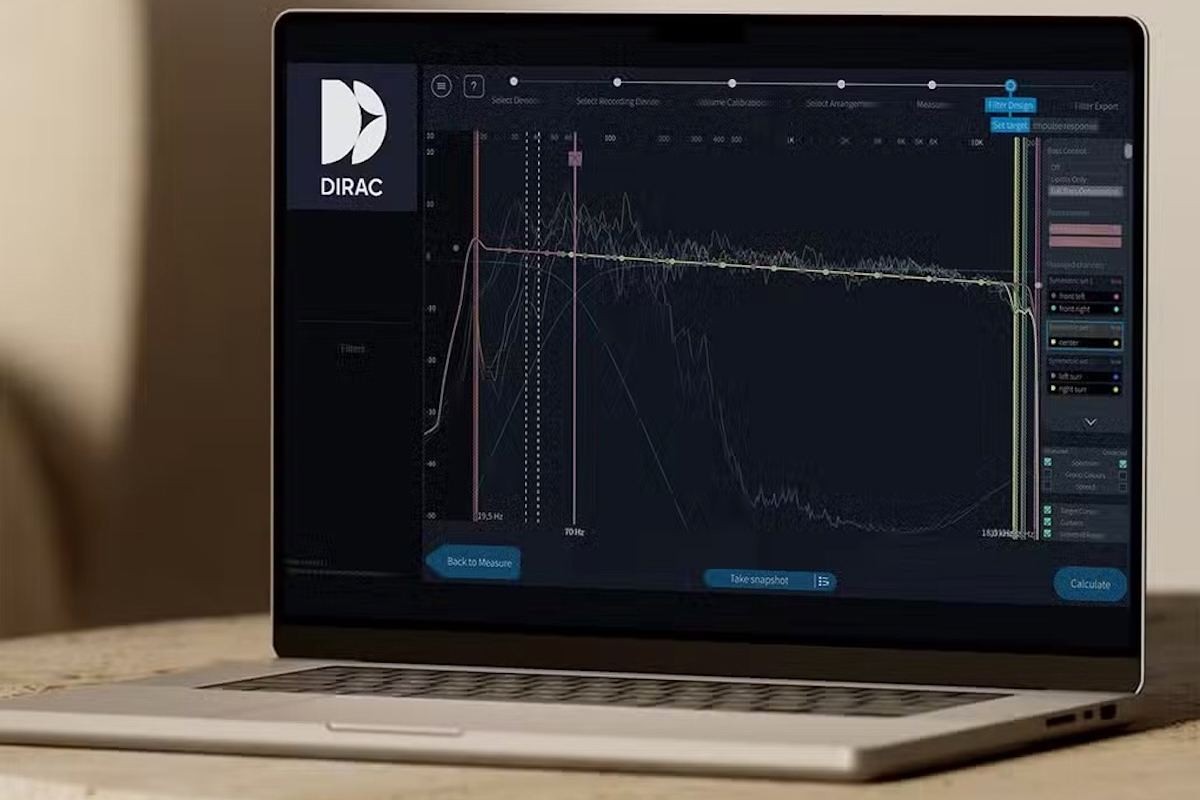
GB: Is it feasible to offer Dirac Live Bass Control in a two-channel Dirac Live–ready product for optimizing it for 2.1- or 2.2-channel use? Or does the playback component need additional processing power to implement the Bass Control filters?
NCE: Bass Control is an add-on that runs on top of Dirac Live Room Correction. It handles the bass management to create an ideal subwoofer from the combination of subwoofers that you have. So Bass Control would require at least one subwoofer output from the device, but in terms of DSP horsepower requirements, it’s not much greater than Dirac Live. The processing is quite simple because it works at very low frequencies. You can cut some corners when you do the processing for lower bandwidths that you could not do for full-bandwidth audio.
GB: What are the tradeoffs between full-bandwidth and limited-bandwidth room correction? Some of our contributors maintain it can be harmful to apply room correction above two octaves higher than the Schroeder frequency.
NCE: As you go higher in frequency, it becomes less about the room and more about the speaker, and also the nearest surroundings. Early reflections are important, and so are diffractions from the speaker cabinet. The higher frequencies will have some impact depending on the speakers you use and how you have placed the speakers in relation to other objects.
GB: In my room, the right speaker is a meter from a big plate-glass window and the left speaker is next to an open boundary to the dining room. So there’s a lot of asymmetry in my listening environment.
NCE: It makes sense to use the full-bandwidth solution there.
GB: Do you have a preferred target curve?
NCE: I like bass. I like a 6 or 8dB boost below 100Hz—not too high in frequency. And I like a slight rolloff at the highest frequencies. It also depends on the room.
GB: How close can a knowledgeable, experienced, patient user get to what you achieve with Dirac Live using a freeware application like Room EQ Wizard?
NCE: That’s a good question. What Room EQ Wizard does is slightly different to what Dirac Live is doing. It helps you set EQ. Based on measurements, it will give you an inversion curve that you can apply to the output. The real differentiator is the phase-response correction that Dirac is performing, which restores the coherence between left and right speakers. You don’t get that with normal EQ. Normal EQ will only try to fill in the magnitude response. It’s not going to do anything about the phase response.
But one does not exclude the other. You can set things up with Room EQ Wizard and get help in placing your subwoofers or have some pre-EQ applied. And then you apply Dirac Live to get the final touch.
GB: Why would you do that? Why not let Dirac do it all?
NCE: That’s what I would do. There is a bit of value in placing the speakers well before you do the digital optimization. But our selling point is that you should not need to do that. It depends on how much time you are willing to invest to get the result you want.
GB: We’re seeing a number of products with some rudimentary form of smartphone-based correction. I’m thinking of Sonos, and the little digital hubs that come with some active speaker systems. You go around the room with a smartphone and it listens to a test tone and then exports EQ filters to the device. What do you think of these things?
NCE: They have some merit in the situations where they’re used. I don’t have any experience of how well they work. But if they work as advertised, then I think they have value.
GB: My experience with them has been mixed. Some of them are pretty random in what they detect and what they purport to correct. But Dirac also competes against full-blown correction systems like ARC Genesis and Audyssey. What distinguishes Dirac from those systems?
NCE: We offer quite an expanded set of capabilities. The main thing, as I mentioned, is impulse-response correction—phase correction of the speakers. Most other room-correction systems only work on magnitude response. They create what we call minimum-phase filters, or in some cases linear-phase filters. What comes out of our filter design is a mixed-phase correction filter, which is capable of readjusting the phase response of the speaker in the room, which neither minimum-phase nor linear-phase filters will do. It’s about the staging and clarity of the imaging between speakers.
. . . Gordon Brockhouse





